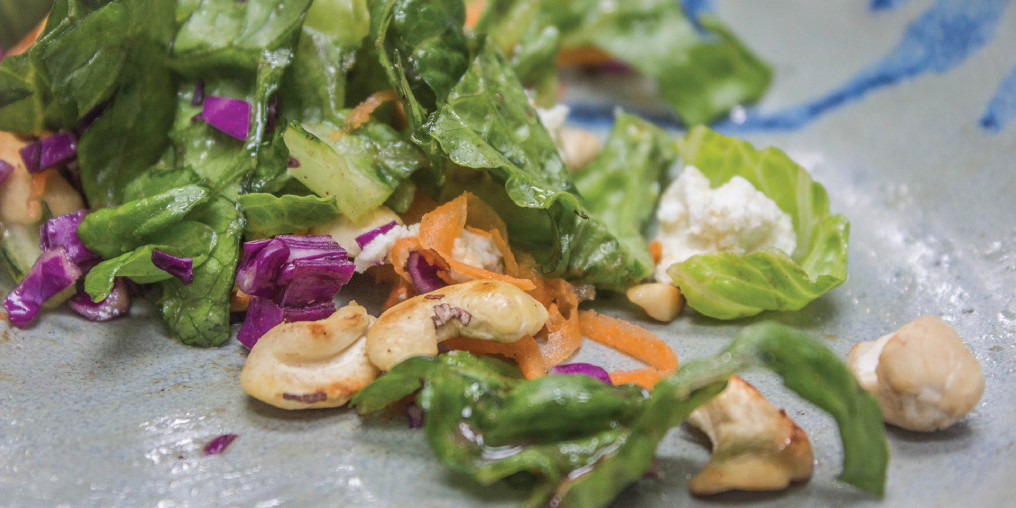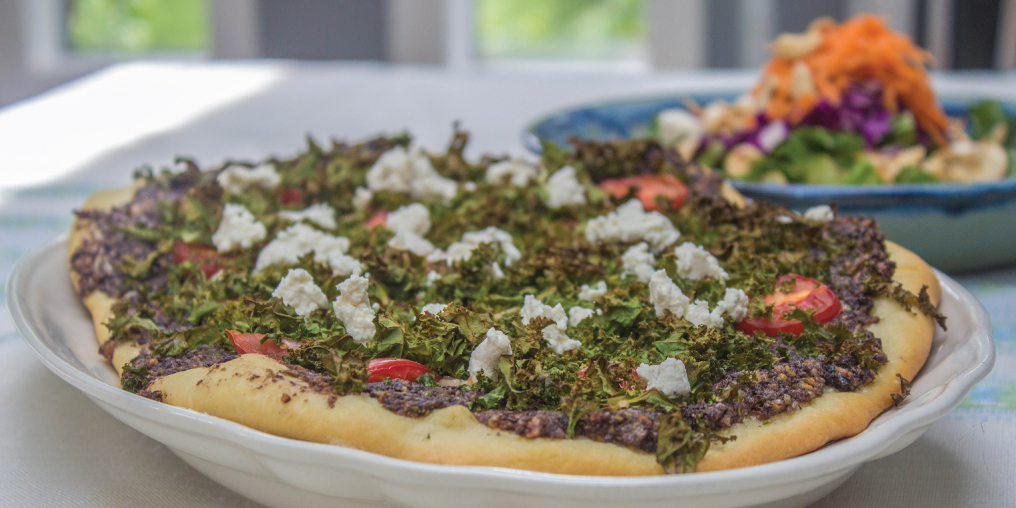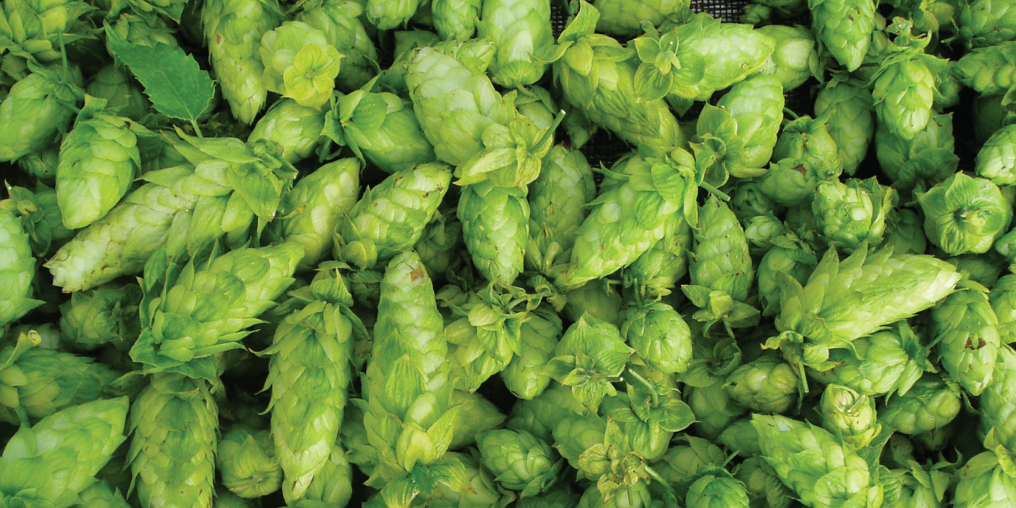No one wants to be told what to eat. Food sharing is at the core of culture, group identity, and pleasure. Just hearing the word “vegan” may bring to mind someone unsavoury in their righteousness and judgement. In my opinion, juxtaposing plant-based eaters against meat eaters is an unhelpful polarization; not everyone will be willing or able to rapidly adopt a strict, plant-based diet. There will always be those who choose to continue eating meat in varying degrees.
Still, we find ourselves surrounded on all sides by mounting research and ethics that are pushing plants to the forefront of our plates. For our health, for the environment, for addressing world hunger—it seems all roads lead toward plant-based eating.
The United Nations has declared meat consumption among the most urgent of humanity’s problems. Canada’s food guide has dramatically shifted this year, recommending, for the first time, that people eat a diet consisting almost completely of plants and plant proteins, all together doing away with the dairy category. The health advantages of eating a plant-based, whole foods diet are well documented. This research is slowly seeping into the daily lives of conscious eaters around the globe. Advantages include, but are not limited to, a substantial decrease in cancer, cardiovascular disease, obesity, and diabetes, and a much lighter footprint on our planet.
While the health benefits are both staggering and inspiring, the larger cost of the meat on our plates is often overlooked. Animal agriculture is one of the largest sources of greenhouse gas emissions on the planet. With the ravages of climate change, wildfires, icecap melting, habitat destruction, increased population, and world hunger being top of mind for our species, it’s shocking that we’ve turned a blind eye to our way of eating for so long.
It takes 16 times more land and 10-20 times more water to produce meat than it does to grow plants. Seventy percent of the earth’s deforested agricultural land is used to feed livestock. The Amazon rainforest (often referred to as the earth’s vital lungs) has been destroyed at a rapid rate since the late 70s to create grazing lands for the world’s beef market. World hunger and population growth are problems that are not going away. The great news is we already produce enough food to feed the planet’s human population. The not-so-great news is that we are currently feeding most of that to animals, and the return on our investment is not efficient.
So what are we to do? Anyone who is truly paying attention to the state of our planet is surely looking for answers. Few of us can afford an electric vehicle or a net zero home. Many of us were raised in meat and potato families, where tofu is like a strange and misunderstood cousin. We may hope to love it, but don’t feel we have the tools yet.

In my experience, there are a few key steps to a successful plant-focused shift in diet. First, learn about the nutritional value of plant-based foods so you can strike a balance between protein sources, starches, and healthy, whole food fats such as avocado and coconut. Many plant-based foods pull double duty in multiple categories, such as legumes, pulses, nuts, and seeds. After that, learn to mix and blend the numerous amazing flavours of fruits, vegetables, and spices. This is key to satisfying and delicious plant-based eating.
Despite long-standing myths, you can get more than enough protein on a plant-based diet. Many elite athletes have proven so with amazing results. Examining the source and impact of what we consume connects us to food and the earth. There has never been more information so readily available, online or via documentaries like Forks Over Knives or Michael Pollen’s In Defense of Food (both available through Netflix).
If you choose to eat meat, look honestly into your sources and their impacts, and adjust your consumption accordingly. As with all disciplines, it is good to learn the rules to consciously know when and how you want to break them.
There are some hard and fast rules that simplify shopping and meal preparation. Shop in a horseshoe around the outer edge of the grocery store to load up on fresh fruit, vegetables, and whole foods. Avoid a common trap of vegetarian and vegan eating—replacing animal protein staples like chicken and ground beef with highly processed food. You will miss out on both the flavour and nutrition. Instead, gather tips from others, scour cookbooks, or find a favourite plant-based blog. Make or stock up on sauces, dips and spreads—try peanut sauce, tahini dressing, hummus, cashew dip, and coconut yogurt tzatziki. I try to have a few of these handy, and it makes snacks enjoyable, nutritious, and easy. Meals in our house usually take less than 30 minutes to prepare.
If you have kids, include them in the process. Be honest with them about where meat comes from, and the footprint of their food. There are no perfect answers, but many opportunities for learning and positive action. Challenge them to invent new plant-based meals, or plant a vegetable garden and learn alongside them. Your children may wish to continue eating meat (as mine do, occasionally) but they’ll become aware that it’s a conscious choice. After all, their generation will pay dearly for the state of our health and the condition of the environment in future years. They deserve to be involved.
One meal at a time, one day at a time, we can shift to more healthy and conscious eating for our bodies and for the planet. It doesn’t have to be complicated. In the words of Michael Pollen, “Eat food. Not too much. Mostly plants.”





